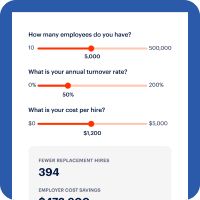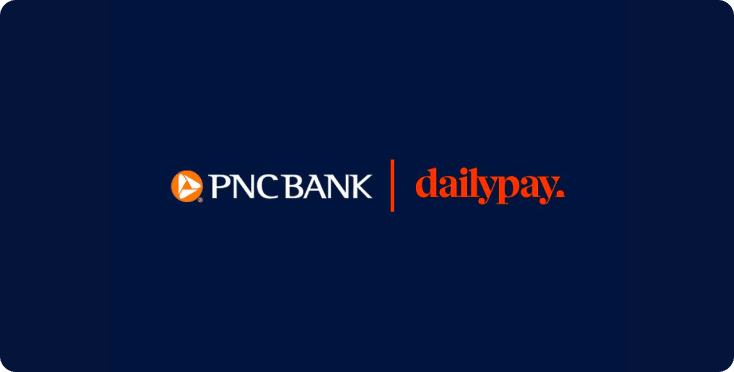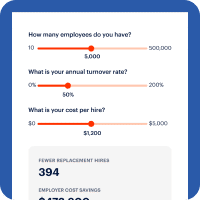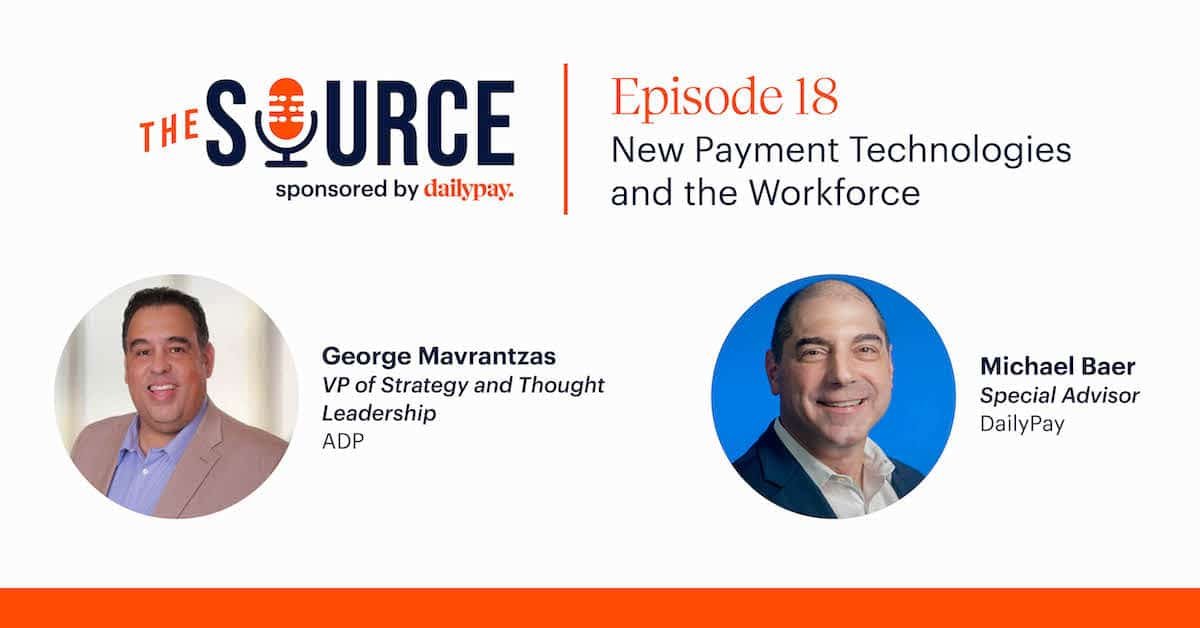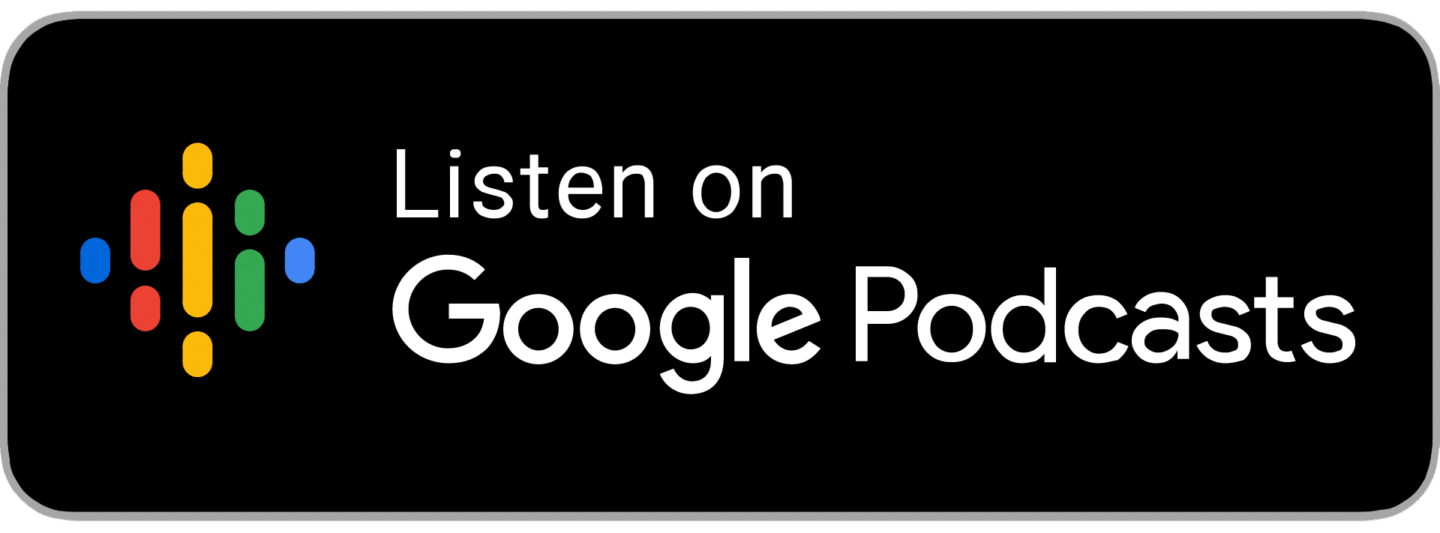As employers address the challenges associated with the changed employment landscape, many are adopting advanced payment technology to better the payroll, and overall employee experiences. On this episode of the Source by DailyPay, ADP Vice President George Mavrantzas discusses what impact these new approaches are having and what’s next in the near future.
About Our Speakers

George Mavrantzas, ADP’s Vice President for Strategy and Thought Leadership, has more than two decades of experience in the prepaid industry — the last 17 years specifically in payments. Prior to ADP, George held several executive and senior level positions at firms including Global Cash Card, rapid! PayCard, Incomm, ITC Financial Services, T-Mobile, and Powertel.
George is committed to educating professionals on the ever-changing payments landscape and the benefits of electronic pay, and speaks at more than 50 industry conferences a year. He is a past recipient of the American Payroll Association’s Citation of Merit for his contributions to the payroll industry.
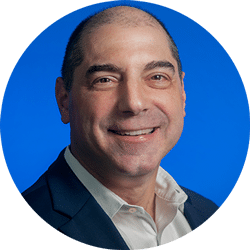
Michael Baer is the host and executive producer of The Source, sponsored by DailyPay podcast. Michael previously oversaw domestic and international payroll news and analysis at Bloomberg Tax, previously BNA.
In a career spanning three decades, Michael transformed the role of managing editor, becoming an information services leader who managed every aspect of world-class global products and platforms, while continuously increasing revenue and achieving market-best customer satisfaction.
Michael has been a frequent public speaker for conferences and webinars and is a past recipient of the American Payroll Association’s Special Friend Award. Michael joined the DailyPay team in 2019.
In this podcast you will learn about…
- How advances in payment technology contribute to financial wellness
- Why employers are searching for more flexible employee payment options
- The importance of data integrity, security, and compliance in the payment realm
Welcome to The Source, the definitive destination for timely and informative regulatory updates and issues in the on-demand pay industry.
The Source is brought to you by DailyPay, the industry-leading technology platform that’s creating the world’s next financial system by rewriting the invisible rules of money.
This material is for general information only, and the views expressed herein reflect only the views of the participants.
This program should be considered marketing material and should not be relied on as legal, tax, accounting, or regulatory advice.
And now let’s welcome the host of The Source, Michael Baer.
Michael Baer: Hello everyone, and welcome to The Source. The Source is sponsored by DailyPay and it provides insights into active and upcoming developments impacting the on-demand pay industry, HR and payroll, and financial technology. And with special guests, we help clarify issues surrounding access to pay and the pay experience.
Michael Baer: For today’s podcast, we welcome someone well known in the payroll and employee payments community. Mr. George Mavrantzas, ADP’s Vice President for Strategy and Thought Leadership. He comes to us with over two decades in the prepaid industry, and the last 17 years specifically in payments. George is committed to educating professionals on the ever-changing payments landscape, and the benefits of electronic pay, and he speaks at more than 50 industry conferences a year. He is a past recipient of the American Payroll Association’s Citation of Merit for his contributions to the payroll industry, and we at The Source are glad to have him here as our guest. Welcome, George.
George Mavrantzas:
Thanks, Mike. Thanks for having me today.
Michael Baer:
And I really mean it. I want to thank you for taking time out of your packed schedule to talk to me here. I know you spoke at two events last week alone, but George, let’s get started. There’s a lot of uncertainty right now as employers are trying to climb out of this impact of the shutdowns and continued restrictions. Many are struggling with providing that right mix of pay and benefits that will allow them to keep the talent they have and recruit more effectively. What impact does adopting improved payment technology have as part of solving this employment dilemma many employers are facing right now?
George Mavrantzas:
It’s a great question, Mike, and it makes a significant impact in today’s environment. We have a variety of different components coming together at the same time. Whether it be this dynamic shift in the workforce composition, this continued consumerization of payments, even exacerbated, if you will, during COVID, and this rise of non-traditional financial products. So, I think employers who are trying to keep their existing talent while attracting new talent, are looking for ways to differentiate themselves. And we know this humongous financial wellness concern through tools is a huge player in this unique scenario for employers.
Michael Baer:
So, George, you’re talking about the financial wellness tools that are a part of the employee payments options nowadays, or that are becoming more of a part?
George Mavrantzas:
Definitely, definitely. We know that our younger generations, that is, our next gens, millennials, and Gen-Z, are putting this heavy technological demand on the market Pay Card, ATM. And a lot of employers are trying to meet those demands through innovative payment platforms. So unfortunately, we have, still more than half of our workers living paycheck to paycheck.
George Mavrantzas:
One of the biggest concerns in the middle of this pandemic is they’re running out of funds two or three days before the next pay period, and have to make some very difficult decisions. Do I buy groceries, prescription medication, et cetera? So having these financial wellness tools, it’s critical, and we know from the research that the ADP research team that there’s some confusion in the market way, employers want to provide these financial wellness tools for employees, and employees want to work for employers who offer of those same tools.
Michael Baer:
So George, related to all that, what employers are facing right now, from your perspective, what are some of the top issues facing them when it comes to improving those payment processes? What are the challenges they’re facing in trying to implement better payment processes?
George Mavrantzas:
Well, I think some of the main challenges in today’s environment is we’ve had so many organizations really push their workforce remotely, and we don’t have any of those archaic processes before where you’re wanting an employee to come to the office and pick up a check. So, in this time of COVID, we’re really trying to increase payment options, alternative payment options. Really, this should be the time that you’re trying to maximize the direct deposit and electronic participation; that is because we don’t know of many instances around when I’m going out of the office, different states have different criterium. So being able to provide these flexible payment options to your entire workforce population really enables you to move quickly and get these hard-earned funds in the hands of your employees right away.
Michael Baer:
So and out there, the technological advancements are happening really fast. And for employers, I mean, there are solutions out there, but how, I mean, there’s some challenges there, there’s a plethora of these quote-unquote, “solutions.” Some of them are, I put in quotes, “Some of them are the real deal.” And I see a concern that adopting just the next widget, just because it’s an advanced widget, may not actually bring better results. How do you identify the really actual advancements in the applications from the ones that really may never work well? How can we help employers make that distinction?
George Mavrantzas:
Well, I think we have to look at it from two different angles. Number one, the data that we are receiving really highlights some of these technological demands our younger generations are putting on the market, that is, around speed, access, convenience. However, there’s one thing that trumps all that Mike, and that’s security. So when we look at these technological advancements, we really have to ask that one big question. Is it secure and does it work? Is it going through all the data integrity testing, proof of concept, all the different things that you need to know is going to work with such a high sense of urgency application. So we’re dealing with people’s hard-earned wages so we have to have a high-level of urgency, up time on the system.
George Mavrantzas:
Number two, what I’ll tell you, Mike, is that from my experience, having that in-house technology, having your destiny in your own hands, if you will, has always been a big advantage in the market as well. So, we’re talking about security, and you can’t talk about security, and you know this from your involvement with payroll, if you’re not talking about compliance as well, how do you mitigate the compliance within the technology as well? And, from a payments’ perspective, you’ve got a variety of overlapping banking regulations, federal, and then you’ve got 50 states to deal with. So you really have to work with a partner that has the system and has the agility to move quickly.
Michael Baer:
Yeah. And I know ADP, I mean, you vet a lot of these providers of systems that could be aiding payments, like DailyPay, you vetted us. And to ensure that these things haven’t been rushed to market without full testing and proof of concept, those are, to me, the key issues for an employer, because I do see tools out there that look good, but they have not been vetted for, say, compliance issues and things like that. And that seems to be a challenge.
George Mavrantzas:
No, I agree with you. We go through rigorous vetting for our ADP marketplace when it comes to testing, and we’re just not doing a plug-and-play type of application. And we know the importance of what we’re looking for in terms of an outcome for our partners and for our end-users. So there’s a rigorous vetting process, testing, multiple levels of testing to ensure that once you’re in the marketplace, then you are a trusted partner and you have the trusted capability that we’re looking for when it comes to any of the variety of add-ons available when we talk about payments.
Michael Baer:
We appreciate that, with our partnership with ADP here at DailyPay, just switching a little bit, the tact professionally, I wanted to ask you, George, how has your experience ushering a new technology into the mainstream? And I’m talking particularly about your role in the past, and you’re still doing this, advancing payroll cards as an understood and approved method of payment. And what I’d like you to do because you have such great perspective is compare what we are now experiencing with the adopting of on-demand payment solutions.
George Mavrantzas:
Mm-hmm (affirmative).
Michael Baer:
Any advice on what we should be expecting in the marketplace, based on that past experience you’ve had in bringing payroll cards into more-
George Mavrantzas:
Well, definitely and-
Michael Baer:
… more acceptable-
George Mavrantzas:
I think-
Michael Baer:
Solution, right.
George Mavrantzas:
Right, Mike. And I think what I focus on primarily is, I don’t want to age myself too much, but I have been in pay cards for a while. And when we originally got into to this endeavor, we were going after the 50 million Americans who couldn’t get a bank account, for whatever reason, couldn’t take advantage of direct deposit; debt, credit, divorce, bankruptcy, commonly referred to as the unbanked, the underbanked, the underserved, and as that evolution of pay cards continued. And we got to our next gens; we learned that nine to 10 million of them didn’t have a bank account. And Mike, it wasn’t because they couldn’t get one, it’s because they didn’t want one. We found that they were less tethered, relative to the past, like brick-and-mortar financial institutions and paper checks. So the technology is so important. And as we saw the introduction of mobile digital wallets, like Apple Pay, Digital Pay, and Samsung Pay, it really fit well into this era of COVID where we talk about contact list payments, contact list receipts.
George Mavrantzas:
And the last thing we’ve learned was the fact that our next gens really trust payroll professionals. So they don’t have these existing relationships like older generations do with a tax preparation person or a financial advisor. They find the payroll professionals just as trustworthy as some of these old roles. So what we’re seeing is they’re wanting more financial wellness tools, and that’s why we’ve seen this introduction and this wave of on-demand pay today. And it reminds me of my first Congress back in the early 2000s, when there was so many pay card companies, you never thought existed where we’re seeing the introduction of these on-demand tools to help with the financial wellness concerns of our workforce population. And I think as the technology continues to roll out, you have to ask the same questions over and over. Number one, is it safe and secure? And number two, does it really fit into those demands? Is it fast? Is it convenient? Does it help me stay away from predatory lending and some of the other expensive ways of how employees are working through their difficulties right now?
Michael Baer:
Right. And is it compliant? I mean, I know on the pay card side, there were challenges and this is still developing on the on-demand payment side. There were challenges directly on the concept of that method of pay. And now with on-demand payment solutions, we’re talking about the when of the pay, as opposed to the how. The how seems to be now settled. Pay cards and other digital instant transmissions and things like that are fairly understood and in commerce now, but now it’s just the time of the pay that seems to be now one of the things. So very, very interesting, this evolution that’s happening and the parallel, I always parallel. And I talk to my friends at the American Payroll Association and they feel the same way that the on-demand payment solutions’ evolution so far is more in the, can be compared to the pay card development in several ways.
George Mavrantzas:
No, I agree, Mike, and I think you mentioned it in your last response about compliance. I think many times, we’re in this industry together, many times the product arrives many times before the compliance does. So the compliance is catching up. So we see a little bit of that today with on-demand pay. What I will tell you, which is very, very correlated between the two technologies, whether it be pay cards or on-demand pay, is that you really just don’t hand a card over and say, “Good luck.” There has to be a very in depth plan of training, field support implementation, and continuing education, because we work in so many different industries, who we’re training on day one, and if you’re in a specific industry by day 90, you have 50% new employees. So the education has to be continuous and the training has to be a big part of the plan as well.
Michael Baer:
Yeah, I think we’re noticing that for sure. In the on-demand pay arena, not just for… For the employees themselves. I do see them, they get up to speed pretty quickly, but there is some understanding that needs to happen. Like, how much am I going to be able to draw before payday, those questions need to be answered. And then on the employer side, how involved is the payroll department on it? And then, of course, on the employer side, how compliant is this solution? Am I going to be exposed in any way? And those are important questions that need to be asked, and those were the basic same questions that have been asked for the pay card in the past. So, well, let me ask you one more question here, George, and then we’ll let you go back to your busy schedule.
Michael Baer:
I asked you earlier about the top issues employers are having in improving payment processes. And one of the things you identified already is that part of the employment payment process is now really, we need to be offering some sort of financial wellness solution or financial awareness solution in that to help the employees get a better gauge of what’s coming in and when it’s coming in. In your opinion, what are some of the top solutions right now being applied to resolve some of these issues, maybe not just financial wellness, but also just in general, the timeliness of payments, and the accuracy of them?
George Mavrantzas:
So we’ve seen a lot of positive things being directed toward this financial wellness conversation when it comes to our workers. I think anything that can keep more of your money in your pocket, whether you can spend those funds better or more wisely if you will. If you have savings envelopes.
George Mavrantzas:
I think there’s a whole series of tools, which we’re very fortunate enough to have that, at ADP with Wisely, where we’re not just providing a replacement to direct deposit or a replacement to a paper check. We’re offering a program that is fully robust and more functional than your normal credit union and bank software, which allows you to take advantage of rewards and savings envelopes, have the ability to do on-demand pay. I can’t tell you how successful early availability of direct deposit has been, especially right now in the middle of this global healthcare crisis that we’re in. So I think we know our younger workers are asking for these types of technologies and solutions, and it’s really incumbent upon employers to meet that through innovative payment platforms like PayPal, where it’s on-demand pay. And I think we see that continue to develop as we work our way out the pandemic.
Michael Baer:
Yeah. And getting back to that first statement I had, was that employers are trying to climb back in to full productivity, full service, providing full services. And it’s been very difficult in this environment to recruit and retain. And the payments part, the employee payments part seems to be such a big factor in that overall employee experience. And then, as you mentioned, so I think, is there any comment you would like to make on that?
George Mavrantzas:
No, listen, I really feel that whatever we can do to help in that vicious circle that employees suffer from. Many of them can’t accommodate that $400 average financial shock or trauma that comes during a pay cycle. And what ends up happening is they end up missing work to address that car repair, that healthcare emergency, childcare emergency. And if they’re missing work, they’re missing more funds. So they’re in that financial wellness type of cycle from a negative perspective because we know, if you’re missing work and time because financial wellness concerns, you’re more likely to turn over. You’re less likely to be as productive and you go to that employee trap of retention and attracting new talent. So with the introduction of these financial wellness tools, like on-demand pay, if we can get in front of that, help employees bridge that gap that way, they can spend more time at work, whether or not away from work. I think that’s one of the key parameters that we’re looking at in terms of keeping employees happy, keeping them more productive, especially in the unstable state we’re in today.
Michael Baer:
Well, fantastic. And that’s the last word. So thanks so much, George Mavrantzas, ADP vice president, for your thoughts and insights on the revolution happening in employee payments right now. And we know we will see George at upcoming payroll and other events. And listeners, I want to thank you for joining us at The Source by DailyPay, and for more on The Source by DailyPay, go to dailypay.com and look for the podcast page. We also are available on Apple, Spotify, and Google podcast platforms. So stay healthy and safe, and keep an eye on your emails and social media as we have another compelling issue along with updates very soon. Thank you very much and have a great day.
Speaker 1:
Thank you for attending The Source brought to you by DailyPay, the industry-leading technology platform who’s reimagining the way money moves. Join us again next month for up-to-date insight on the on-demand pay industry. Keep an eye on your inbox for more information regarding featured guests and new topics.



